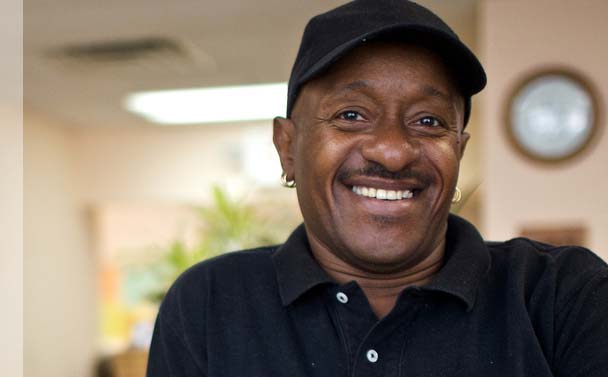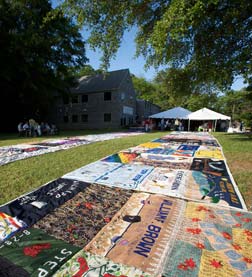Within that first year, it became apparent that something new was happening, and we were of course, as it turned out, sort of at Ground Zero of the AIDS Epidemic.
—Dr. Jay Dobson, New York-Presbyterian Hospital
It Begins
Gay men were disenfranchised sexual minorities and by the late 1970s and early 1980s they began requesting—and requiring—equal rights. This equality became available in some large urban areas especially in New York and San Francisco, affording gay men a new sense of freedom. Gay men flocked en masse to these locales where they could live and love as they chose. The joy of this moment was short-lived.
A disease suddenly began to spread and that, at first, made no sense, seemed to have no clear cause, and had no immediate or direct treatment. In 1980, physicians working in gay enclaves began to see men presenting symptoms of what appeared to be the flu, but often became a deadly case of Pneomocystis carinii pneumonia (PCP). Others had rashes on their skin—later diagnosed as Kaposi’s sarcoma, a rare cancerous tumor of the connective tissue previously seen most often in older men of Italian or Eastern European Jewish origin.1 PCP and Kaposi’s sarcoma were among the earliest opportunistic infections of HIV disease, though clinicians didn’t know it yet. HIV compromises the immune system creating “opportunities” for pathogens to infect and creating a whole host of health issues in HIV-positive persons. So what had seemed like isolated and unexplainable occurrences quickly became something more.
In June 1981, an entry in the U.S. Centers for Disease Control and Prevention (CDC) Morbidity and Mortality Weekly Report captured the attention of the medical community the world over:
In the period October 1980-May 1981, five young men, all active homosexuals, were treated for biopsy-confirmed Pneumocystis carinii pneumonia at three different hospitals in Los Angeles, California. Two of the patients died.2
This was the first official scientific documentation of what would shortly thereafter be termed gay cancer or the gay plague in the media,3,4 and gay-related immune deficiency (GRID) by the CDC.5,6,7 The illness continued appearing with increasing frequency. The medical community and scientific researchers had no idea how it was spread, or why gay men appeared to be carrying such a disproportionate level of burden of the new disease.
In 1982, the CDC re-named the disease Acquired Immune Deficiency Syndrome (AIDS) to reflect the evidence that it was impacting various populations, including injection drug users, Haitians, and hemophiliacs.8 Still there was no question that this disease was claiming the lives of gay men in staggering numbers, as it would for decades to come. At the end of 1983:
- 71 percent of the 3,064 reported AIDS cases were among gay and bisexual men;
- 42 percent of all cases were in New York City, 12 percent in San Francisco, and 8 percent in Los Angeles.9
Of course, the story of HIV/AIDS among the gay community is about far more than the numbers. It is the tale of a community jolted by fear, shunned by many, and awakened to its own deep sense of compassion. This story of individual and collective suffering and bravery is inextricably tied to the Ryan White HIV/AIDS Program itself and, of course, the efforts of the U.S. Department of Health and Human Services (HHS), Health Resources and Services Administration (HRSA) in launching the first Federal efforts to combat this disease and ensure access to care and services for people living with HIV/AIDS who had nowhere else to turn.

| Year | MSM | MSM/IDU | Other |
|---|---|---|---|
| 1982 | 339 | 63 | |
| 1983 | 1,848 | 814 | |
| 1984 | 3,354 | 1,189 | |
| 1985 | 5,391 | 576 | 2,127 |
| 1986 | 8,554 | 954 | 3,502 |
| 1987 | 13,047 | 1,438 | 5,943 |
| 1988 | 17,993 | 2,055 | 11,680 |
| 1989 | 19,652 | 2,138 | 12,808 |
| 1990 | 23,738 | 2,295 | 16,524 |
| 1991 | 23,960 | 2,366 | 18,497 |
| 1992 | 23,936 | 2,429 | 19,970 |
| 1993 | 49,963 | 6,098 | 49,929 |
| 1994 | 34,974 | 3,853 | 40,847 |
| 1995 | 30,671 | 3,425 | 39,284 |
| 1996 | 27,316 | 2,967 | 39,190 |
| 1997 | 21,260 | 2,374 | 36,527 |
| 1998 | 16,642 | 1,984 | 29,261 |
| 1999 | 15,464 | 1,806 | 28,867 |
| 2000 | 13,562 | 1,548 | 26,850 |
| 2001 | 13,265 | 1,502 | 28,216 |
| 2002 | 14,545 | 1,510 | 27,895 |
| 2003 | 15,859 | 1,695 | 27,257 |
| 2004 | 15,607 | 1,696 | 27,312 |
| 2005 | 14,819 | 1,742 | 25,339 |
| 2006 | 13,775 | 1,603 | 23,538 |
| 2007 | 14,383 | 1,514 | 22,400 |
| 2008 | 17,940 | 1,729 | 18,281 |
| 2009 | 17,171 | 1,608 | 7,323 |
| *MSM= men who have sex with men (term used in data source) **IDU= injection drug users |
|||
| Source: CDC HIV/AIDS Surveillance Year-end Reports 1982-2008 | |||






